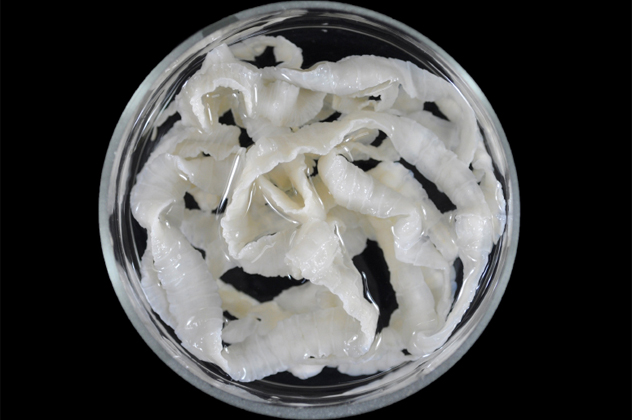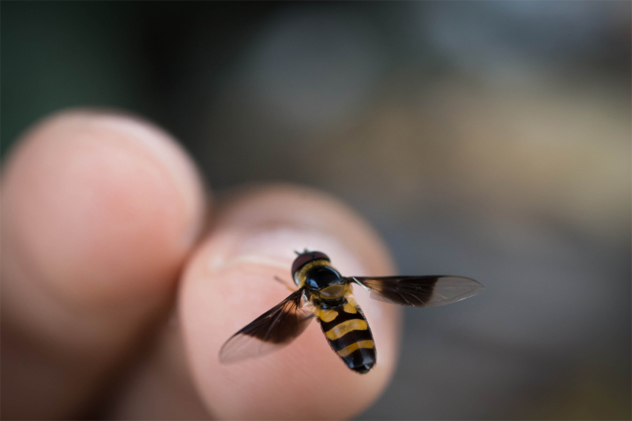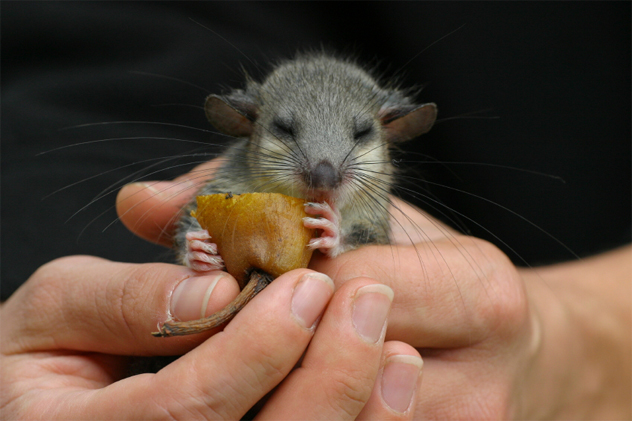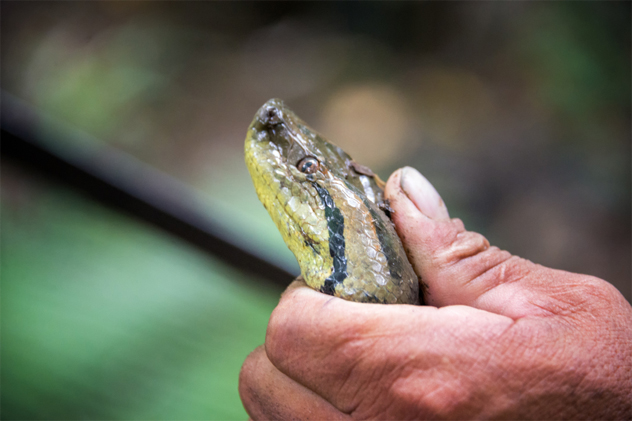 Weird Stuff
Weird Stuff  Weird Stuff
Weird Stuff  Mysteries
Mysteries 10 Tragic Disappearances and Deaths in Joshua Tree National Park
 History
History 10 Ways Childhood Really Sucked in the Old West
 Music
Music 10 Name Origins of Famous Bands from the 1990s
 Religion
Religion 10 Biggest Turnarounds by the Catholic Church
 Weird Stuff
Weird Stuff 10 Unbelievable Times Laws Had Unintended Consequences
 Humans
Humans Ten Historic Women Who Deserve Way More Credit Than They Got
 Movies and TV
Movies and TV 10 Films That Spawned Major Lawsuits
 History
History Ten Times Towns Were Wiped Off the Face of the Earth
 Creepy
Creepy 10 of the Most Disturbingly Haunted Public Houses in the UK
 Weird Stuff
Weird Stuff 10 Niche Subcultures That Are More Popular Than You Might Think
 Mysteries
Mysteries 10 Tragic Disappearances and Deaths in Joshua Tree National Park
 History
History 10 Ways Childhood Really Sucked in the Old West
Who's Behind Listverse?

Jamie Frater
Head Editor
Jamie founded Listverse due to an insatiable desire to share fascinating, obscure, and bizarre facts. He has been a guest speaker on numerous national radio and television stations and is a five time published author.
More About Us Music
Music 10 Name Origins of Famous Bands from the 1990s
 Religion
Religion 10 Biggest Turnarounds by the Catholic Church
 Weird Stuff
Weird Stuff 10 Unbelievable Times Laws Had Unintended Consequences
 Humans
Humans Ten Historic Women Who Deserve Way More Credit Than They Got
 Movies and TV
Movies and TV 10 Films That Spawned Major Lawsuits
 History
History Ten Times Towns Were Wiped Off the Face of the Earth
 Creepy
Creepy 10 of the Most Disturbingly Haunted Public Houses in the UK
10 Badass People Who Did Crazy Things For Science
Scientists take different risks all the time. Some alienate their families and friends by working late hours, while others risk their very lives by exposing themselves to deadly chemicals and lethal pathogens. Some risks are reasonable, especially if an important discovery is at stake, but there are those that make you question a scientist’s intelligence and even sanity.
10James Logan

In 2012, Dr. James Logan, a disease expert at the London School of Hygiene and Tropical Medicine, did an unthinkable experiment that would make many of us cringe in horror: He infected himself with hookworms. Logan then swallowed a pill camera to record the behavior of the disgusting parasites inside his gut. Hookworms are found on feces, and humans and animals normally acquire them by stepping on contaminated soil. But for the sake of the experiment, Logan had his team inject the hookworms directly into his skin.
Logan’s seemingly lunatic action was not random. He willingly infected himself with intestinal parasites so that he could understand the link between food allergies and hookworms, and also to learn how these parasites are “able to get through . . . tough [human] skin.” Previous research has suggested that hookworms can alleviate and perhaps even cure the symptoms of food allergies. Coincidentally, Logan has a food allergy that makes him sick after eating bread.
As the hookworms reached maturity, they started to damage and cause inflammation on Logan’s intestines. The doctor experienced stomach pain, but he was also able to eat bread sticks and pizza without experiencing any symptoms. Logan’s bizarre experiment eventually ended and he took albendazole, an anti-worming drug, to get rid of the intestinal parasites.
9Michael Smith

In 2015, Michael Smith of Cornell University, won the Ig Nobel Prize for physiology after he subjected himself to an awfully painful “why-would-you-do-that-to-yourself” experiment. He had honeybees sting 25 different locations on his body, including his penis and testicles. The reason why Smith subjected himself to such unnecessary suffering is that he wanted to know which body part experiences the most pain caused by a bee sting. His crazy experiment lasted for weeks.
The result: Smith got stung 200 times and he discovered that the three most painful places to get stung by a bee are the penis, nostril, and the upper lip. Of the three body parts, Smith claimed that the nostril is “the worst place for a bee to attack,” which is quite surprising since the penis seems to be the most likely candidate for that distinction.
Smith conducted his insane research in 2012, but it was only in 2015 that he received the Ig Nobel Prize for physiology. This silly award, “which honor[s] humorous scientific achievement[s],” is a parody of the Nobel Prize. Though it’s a spoof, Ig Nobel Prize awards are given by actual Nobel laureates. For winning the Ig Nobel Prize for physiology, Michael Smith received a Zimbabwean 10 trillion dollar bill. Unfortunately, this jaw-dropping amount is only equivalent to a couple US dollars.
8Brian Crandall And Peter Stahl

In a study published in the Journal of Archaeological Science, Peter Stahl and Brian Crandall described an experiment so bizarre and disgusting it will make you want to throw up. One of these anthropologists from State University of New York in Binghamton swallowed a parboiled shrew. Unfortunately, Crandall and Stahl refused to disclose which of them was the unlucky volunteer. The rodent used for this crazy experiment was a northern short-tailed shrew, and it was captured not far from the university. Excluding the tail, the shrew was 90 millimeters (3.5 in) long.
Crandall and Stahl skinned, disemboweled, and then parboiled the rodent for two minutes before one of them swallowed it. The anthropologists did this wacky experiment to discover the effects of human digestion on “small insectivore skeleton[s].”
Three days after the experiment, feces from the volunteer swallower was collected and analyzed. The results surprised the anthropologists. Though the shrew was strictly swallowed, many of the bones disappeared. Crandall and Stahl hoped that the results of their experiment would help archaeologists understand the connection between unearthed animal bones and the people who ate them.
7Regine Gries

Bedbugs are a growing problem, especially in major cities across the globe. But thanks to the work of a dedicated, eccentric female scientist, our centuries-long battle with these stubborn pests might finally come to an end. Regine Gries is a biologist at Simon Fraser University who developed a pheromone-based “chemical lure capable of enticing bedbugs away from our mattresses—and our flesh—and into traps.” But in order to test and perfect her chemical lure, Gries had to make a big sacrifice: Every Saturday, she would roll up her sleeves and have thousands of bedbugs bite her arms.
Initially, Gries and her students fed the bedbugs chicken blood from a nearby slaughterhouse. But the chickens were medicated, and their contaminated blood caused many of the bedbugs to die. After this failed experiment, Gries tried guinea pigs. However, there was a problem. Bedbugs couldn’t suck properly through the rodents’ fur. They had to be sedated and shaved before every single feeding. Eventually, Gries gave up on using animals and decided to do the experiment on herself.
Gries likened the feeling of being bitten by thousands of bedbugs to that of mosquito bites. Interestingly, on another project, Gries had a mosquito colony feast on her body. To date, this eccentric biologist has been bitten by bedbugs at least 200,000 times.
6Anatoli Brouchkov
The search for the fountain of youth is over, or at least that was the claim of a Russian scientist. Anatoli Brouchkov, the head of the Geocryology Department at Moscow State University, stated that a 3.5 million-year-old bacteria (and not a spring) might hold the key to eternal life. To test his theory, Brouchkov turned himself into a human guinea pig and injected the bacteria into his body. The ludicrous scientist claimed that after he injected the bacteria, he “started to work longer” and that he has “never had a flu for the last two years.”
Before injecting the bacteria, named Bacillus F, Brouchkov first tested it on fruit flies and mice. After several successful experiments, he then tried it on himself. The positive result from his animal experiments wasn’t the only factor that convinced Brouchkov to inject the bacteria in his body. The longevity of the Yakut people also persuaded him that Bacillus F do not pose any threat to human health. These 3.5 million-year-old bacteria live in the permafrost. As the permafrost thaws, traces of Bacillus F are released into the environment, specifically into the drinking water of the Yakut population. Brouchkov theorizes that the longevity of the Yakut people can be attributed to their exposure to this ancient bacteria.
5Pradeep Seth

HIV is no longer the death sentence it was during the 1980s. People with the disease are able to live normal, healthy lives as long as they take HIV medication. Though HIV is now a manageable chronic disease (for those who can afford and access treatment), scientists still want to develop a vaccine so that it can be completely eradicated. One of those scientists is Dr. Pradeep Seth of the All India Institute of Medical Sciences in New Delhi. Seth is so passionate about discovering an HIV vaccine that he did something foolish and unethical, but brave. In 2003, he injected himself with a candidate HIV vaccine, which he had developed himself.
Before injecting the HIV vaccine, Seth first tried it on monkeys and mice. The results were encouraging, leading Seth to try the vaccine on himself “to see how the human body would react to it.” Though the microbiologist’s crazy action was motivated by scientific curiosity and a passion to discover a cure that could save millions of lives, the scientific community and government officials criticized him. They called his seemingly reckless experiment foolish and unethical. One of his colleagues even accused him of letting his emotions and bravado drive his actions. Thankfully, the vaccine Seth injected on himself did not contain HIV.
4Jose Delgado
What would you do if a raging bull was charging toward you? Unless you’re a trained torero or matador, you would most likely run like you’ve never run before. But Jose Delgado was different. He had never been in a bullfight until he bravely faced an angry bull running toward him at full speed. Luckily, he survived. But why would he do such a thing? Well, for science. Jose Delgado was a brilliant neurophysiologist who worked at Yale University from 1946 to 1974 and was the first to experiment on animal brain implants.
Jose Delgado was fascinated with animal neural anatomies. He wanted to control their emotions and actions. After many years of experimentation, he invented several sophisticated devices, one of which is called a stimoceiver. A stimoceiver is a “pacemaker-like device that could electrically stimulate a certain area of the brain when triggered by a remote electrical receiver.” This device allowed Delgado to control an animal’s movements and emotional state simply by flipping a switch.
To demonstrate the power of his stimoceiver, Delgado conducted an experiment that could have easily cost him his life: He implanted a stimoceiver in a bull and had the animal charge toward him at full speed. Delgado stood calmly while the angry bull was running toward him. He flipped a switch and the raging animal suddenly stopped, then awkwardly trotted away.
Delgado had hoped that his work on brain-machine connection would be used to treat mental illnesses like depression and schizophrenia. However, because of some ethical concerns from the public, Delgado’s work was never really used by the medical community.
3Phil Kennedy

During the late 1990s, Phil Kennedy and Roy Bakay made headlines across the globe when they introduced the world’s first ever cyborg. The famed cyborg was Johnny Ray, a Vietnam veteran and drywall contractor who had suffered a stroke, leaving him paralyzed and bedridden. Kennedy and Bakay implanted electrodes inside Ray’s brain, specifically in his primary motor cortex (a region in the brain responsible for basic voluntary movements). Ray was soon able to type letters on the computer and control the cursor just by using his brain.
Kennedy’s work on hacking the human brain didn’t end with Ray. In 2014, he decided to experiment on a healthy, fully functioning brain . . . his own. Since implanting electrodes on humans is illegal in the US, Kennedy flew to Belize and paid Dr. Joel Cervantes $30,000 to implant the electrodes for him. The surgery was successful, but it almost cost Kennedy his mind. For the first few days, the renowned neurologist couldn’t speak, his writing was unreadable, and he couldn’t recognize everyday objects. Thankfully, all the side effects of the surgery were temporary, and Kennedy’s mental capabilities went back to normal.
Kennedy’s experiments weren’t over yet. He flew back to Belize to have a second operation. This time, he asked Cervantes to implant a radio transceiver and power coil. Unfortunately, “the incision in his scalp never fully closed over the bulky mound of . . . electronics.” On January 13, 2015, Kennedy had a local surgeon remove the power coil and transceiver. The doctor, however, did not remove the electrodes implanted in Kennedy’s primary motor cortex.
2The Waorani Tribe

Many of us would wince at the thought of snakes, and some would even scream at the sight of one. But the Waorani people living in the Amazonian forest of Ecuador treat snakes as if they’re tiny insects. They’re not the kind of snakes you would find in a pet shop, either. They’re green anacondas, which can grow as long as 9 meters (29 ft) and weigh as much as 250 kilograms (550 lb).
The Waorani were only introduced to the outside world in 1956 and consider their tribe “to be the bravest indigenous group in the Amazon.” As proof of that statement, young Waorani boys are required to track and capture green anacondas using only their bare hands before they can be considered real men. Taking advantage of this unique ability, Renata Leite Pitman—a wildlife vet and research associate with the Center for Tropical Conservation—has partnered with the Waorani to study green anacondas.
After catching the green anacondas, the Waorani would take blood samples to analyze the level of contaminants within the snakes’ bodies, and then insert transmitters so Pitman could track their movements. Little is known about the green anaconda. That is why Pitman is hopeful that, with the help of the Waorani tribe, the scientific community will learn more about the snake’s life, and more importantly, understand “the levels of pollution to which the [Ecuadorian] forest is being subjected.”
1Tim Friede

A man named Tim Friede doesn’t seem to fear the carnivorous reptiles, either. In fact, he’s taken his snake obsession to a deadly level. Over the course of 16 years, he has injected himself with venom from some of the world’s deadliest snakes such as the black mamba, Papau New Guinea taipans, and the western diamondback rattlesnake. Before you label Friede as mentally deranged, you should know that he’s doing this crazy experiment for a noble cause. He wants to build a natural immunity to the world’s deadliest snakes, and he hopes that scientists will use his blood to develop vaccines for future snakebites.
Though Friede’s intention is somewhat honorable, he has been greatly criticized by the scientific and medical communities. They believe that his quest for self-immunization is foolish and that he will eventually pay the price in the form of infections, allergies, organ failure, and even death. Friede’s snake obsession has not cost him his life, but it has led him to lose his family. His ex-wife, Beth Friede, has stated, “Me and the kids never came in first, sometimes not even second. The snakes were always first.” As for Tim, he will not stop “until the vaccine is in the field” or until he dies.
When not busy working with MeBook—an app that transforms your Facebook into an actual printed book—Paul spends his time writing interesting stuff and creating piano covers.








